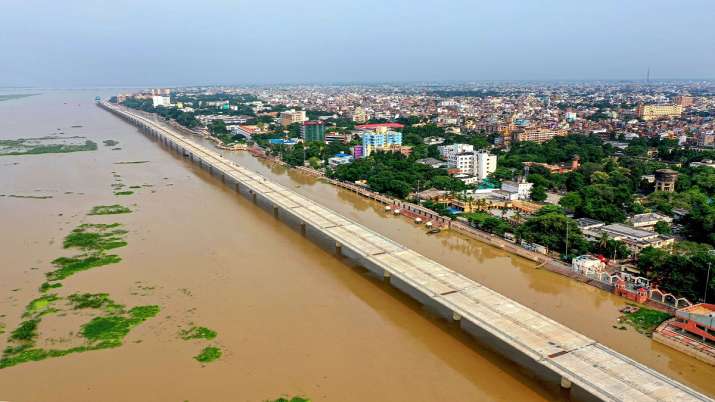
Aerial view of the flooded Collectorate Ghat on the banks of river Ganga in Patna.
The Indian Ocean is warming at a higher rate than other oceans, scientists warned on Monday in the latest report by the Intergovernmental Panel on Climate Change, indicating an increase in heatwaves and floods in India, which will be irreversible effects of climate change.
The authors of the Intergovernmental Panel on Climate Change’s (IPCC) Sixth Assessment Report (AR6), “Climate Change 2021: The Physical Science Basis,” said that warming of the ocean will lead to sea level rise, which will contribute more to the global warming. Frequent and severe coastal flooding in low-lying areas.
“For a country like India, some increase in heat waves is important for aerosol emissions and air quality. We will also see an increase in heat waves, heavy rainfall events and further melting of glaciers,” said one of the report’s authors. , Friedrich Otto said, would affect a country like India, events more complex than sea level rise, which could mean flooding when tropical cyclones arrive. These are just some of the effects that will not go away.
Another author, Swapna Panikal, a scientist at the Indian Institute of Tropical Meteorology, said that about 50 percent of the rise in sea level is due to thermal expansion.
“The Indian Ocean region is warming at a higher rate, which means that relative sea-levels may also rise across regions. Therefore, coastal regions will see sea-level rise during the 21st century and will be more frequent and contributing will cause severe coastal flooding and coastal erosion in low-lying areas. Additionally, extreme sea level events that were previously observed once in a hundred years may also occur every year by the end of the century,” she said .
The report also said that it is undeniable that human activities are causing climate change, making extreme climate events, including heat waves, heavy rainfall and drought, more frequent and severe.
“Human influences have led to ocean acidification with ocean warming and changes in the planet’s frozen regions since the 1970s. Arctic sea ice has decreased by 40 percent since the 1990s and spring since the 1950s.” The snow cover has decreased,” it said.
The report’s authors said that over the next 20-30 years, India will not see much increase in rainfall beyond internal variability change, but both annual as well as summer monsoon rainfall, will increase by the end of the 21st century. . .
“While there is not much model agreement on changes in heavy rainfall events, we can say with certainty that warm extremes are projected to increase and cold extremes are projected to decrease in the 21st century,” Panickel said.
He said that limiting global warming to 1.5 degrees or 2 degrees Celsius would be out of reach if greenhouse gas emissions are not massively cut.
The report said that under a global warming scenario of 2 °C, the length, magnitude and frequency of the fire season is projected to increase, with strong impacts in India, China and Russia.
Read also | UN climate change report: ‘It’s going to get worse…somewhere to run, nowhere to hide’
Read also | UN science panel to release important report on climate change
.